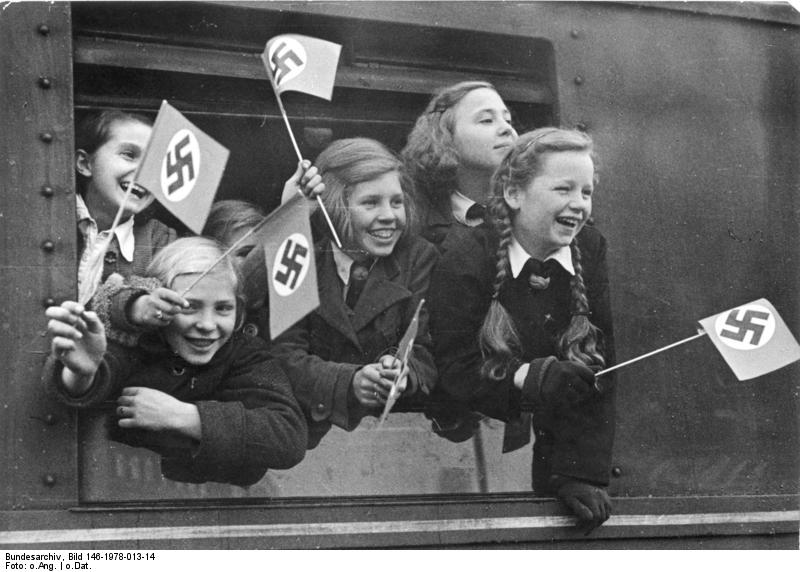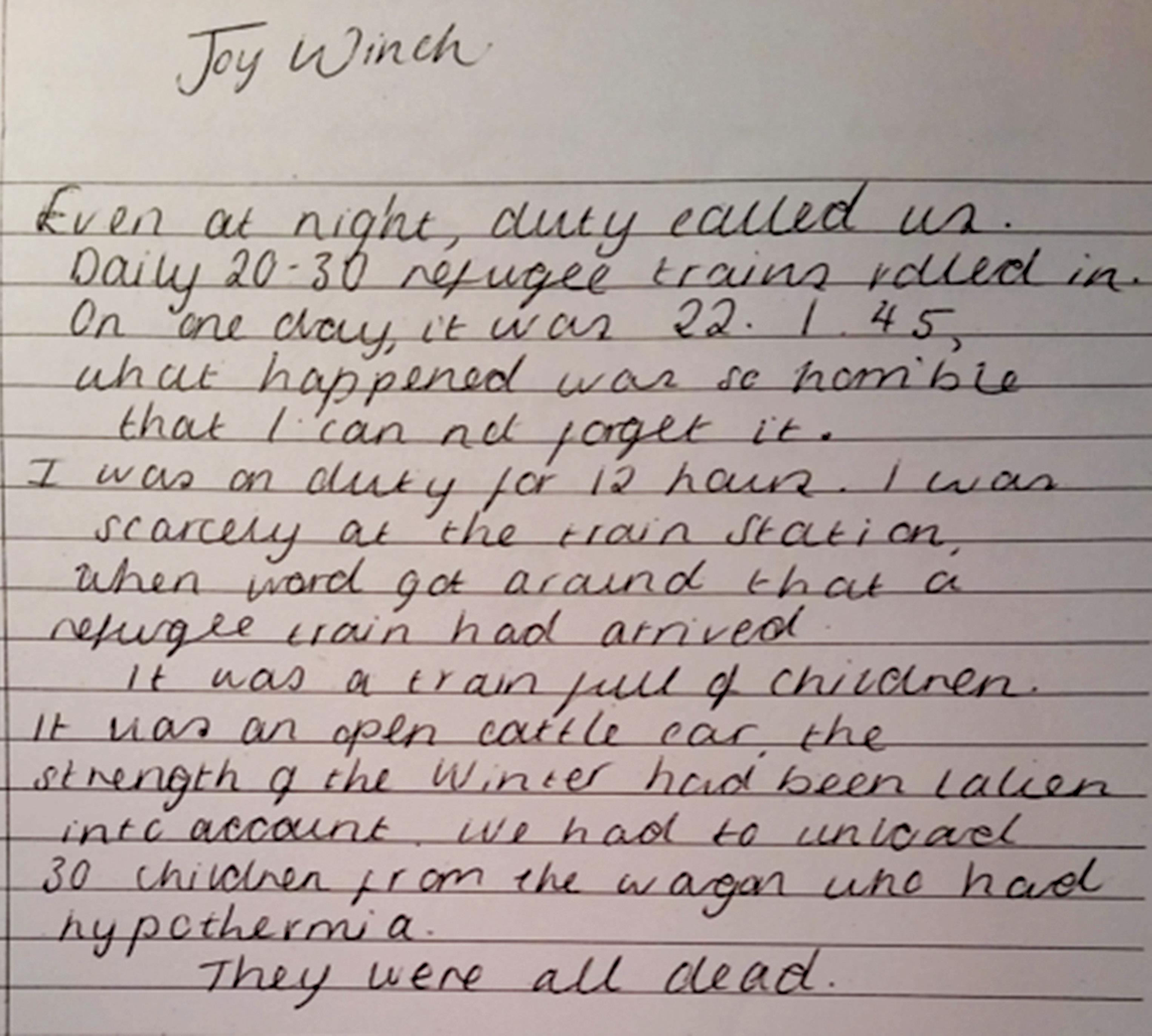Evacuation: Children in Germany
In Germany, the true purpose of the evacuation programme was masked. Instead, the trips were called ‘recreational’. In KLV homes across the country, run by the Hitler Youth, children were exposed to Nazi propaganda and paramilitary drill. Many were very homesick.
The KLV evacuation programme did not always succeed in sheltering the children from the effects of the war. Toward the end of the war, German children were increasingly brought in to help with the war effort.
One such girl is Eleonore (aged 16), who had to help out at the train station in Sagan (Silesia), where many refugee trains carrying ethnic Germans from the East came through. In a school essay, she wrote: “We had to unload 30 children from the wagon who had hypothermia. They were all dead.”




